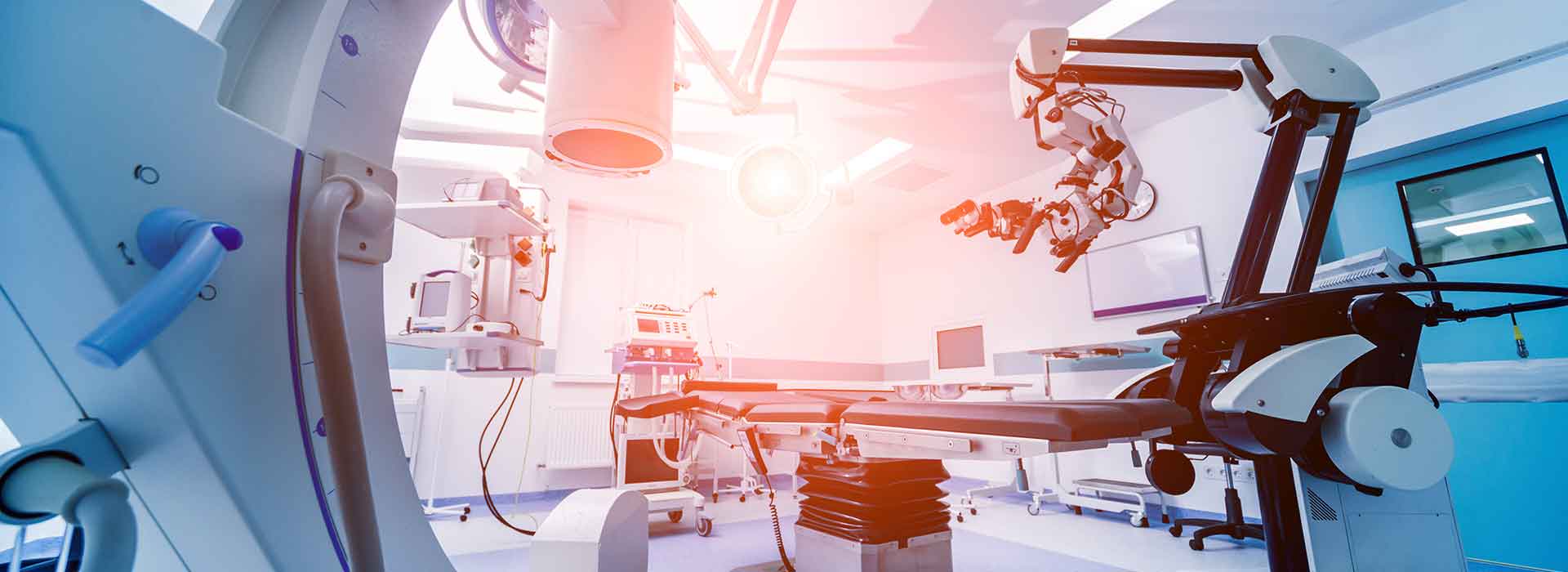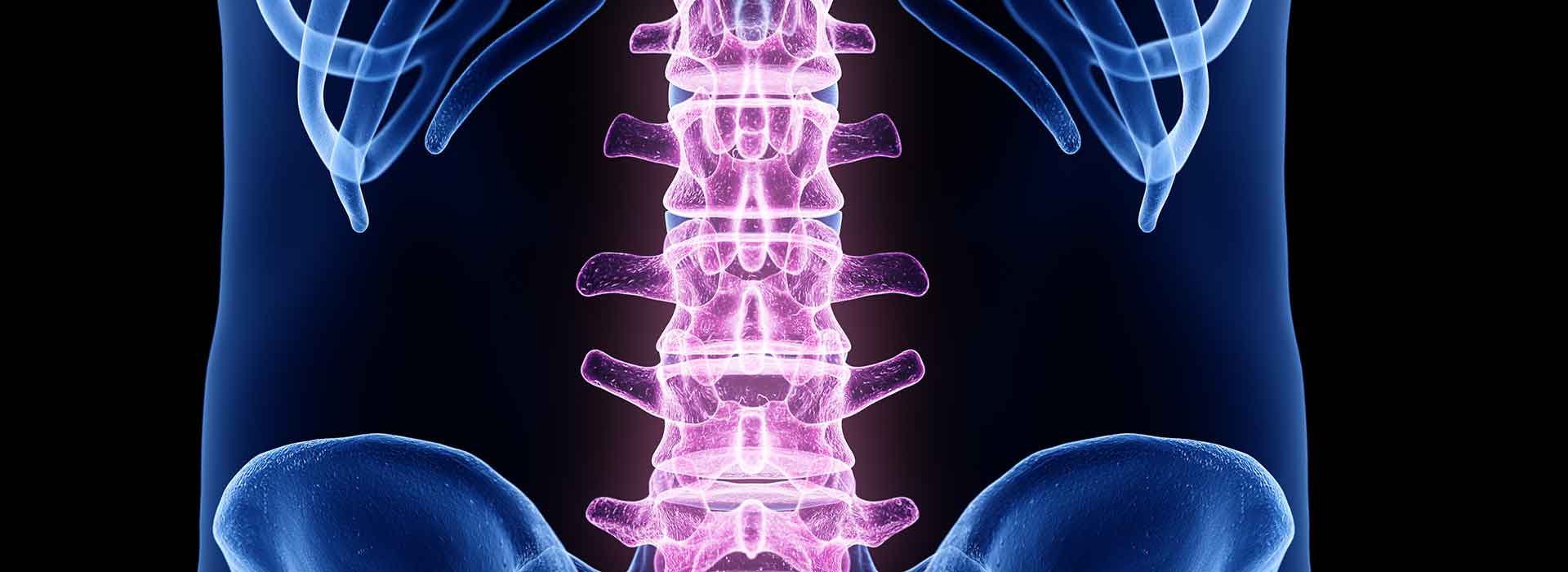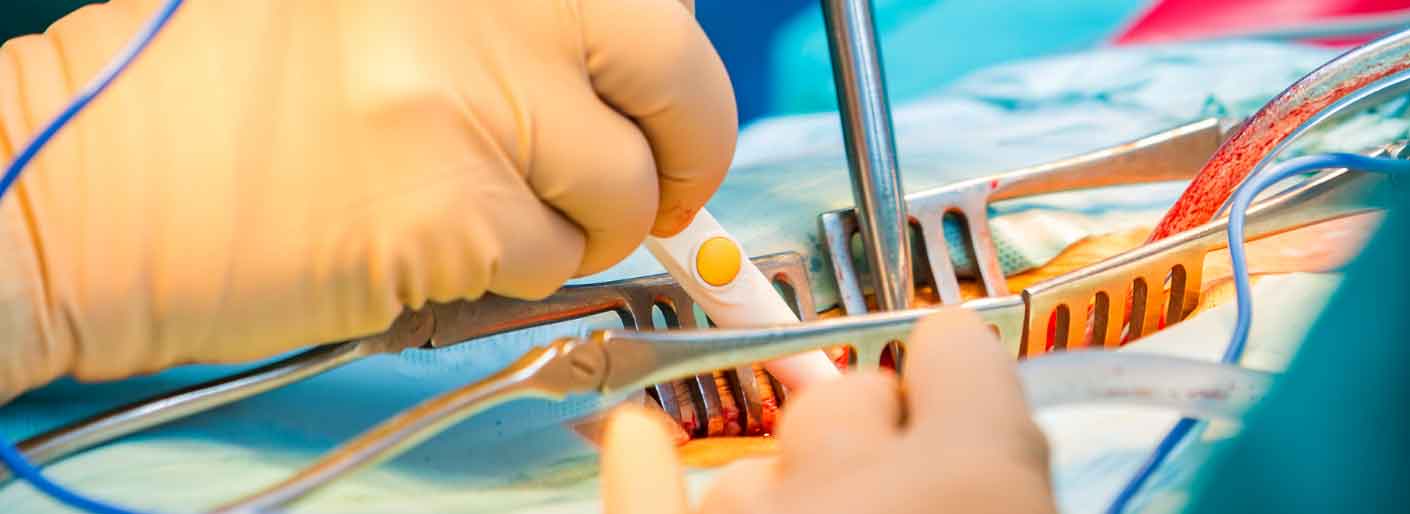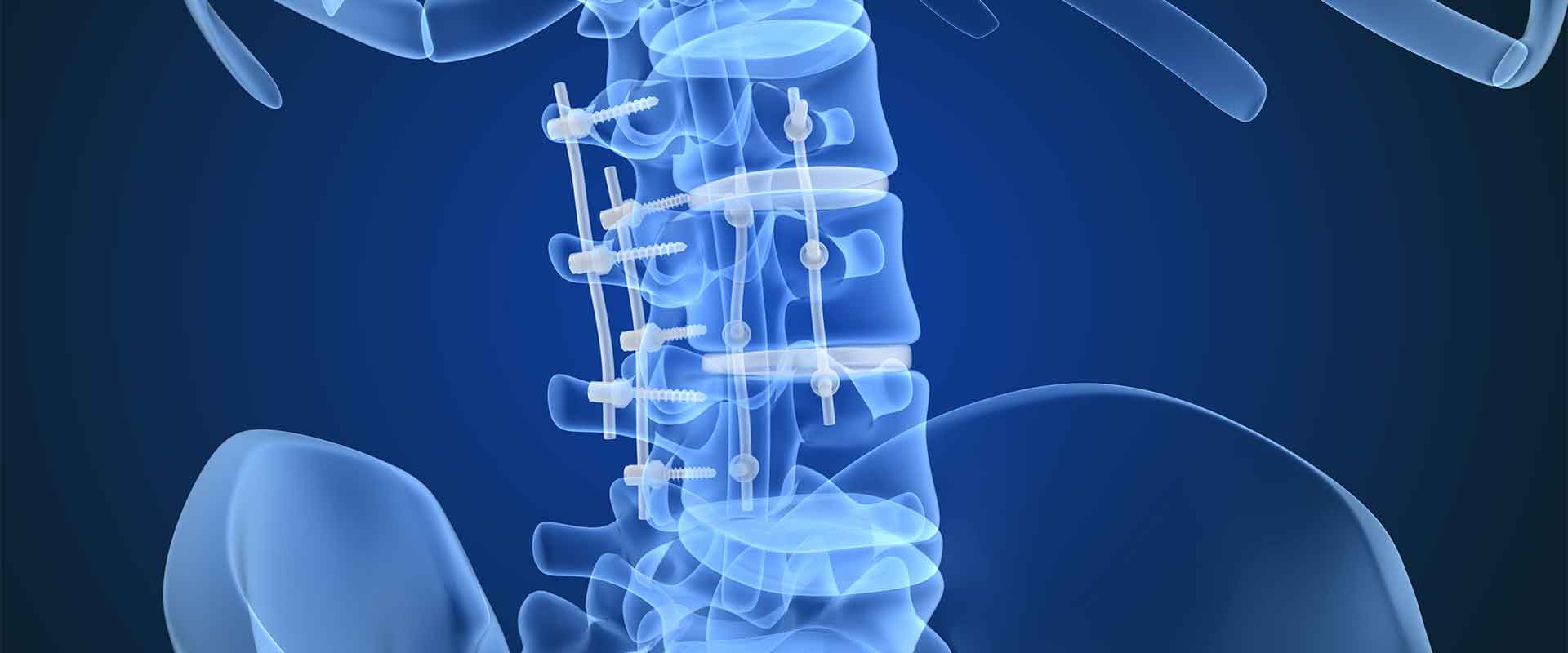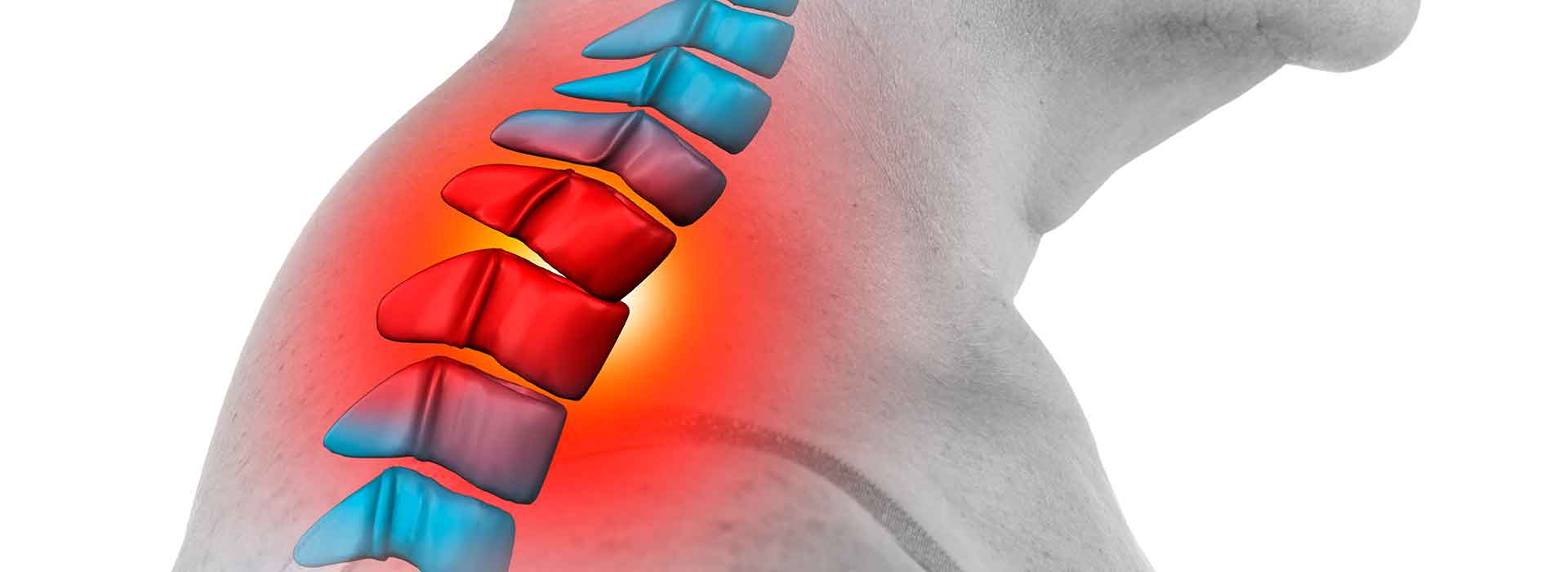PEEK is a frontline choice for cervical implants
For nearly two decades, PEEK cervical implants and spacers have been placed in hundreds of thousands of patients, and the results have been impressive. PEEK possesses many advantages over competing biomaterials, including titanium, and its full capabilities are still being discovered. While research and development continue, it’s clear that PEEK is the present and future of spinal implant procedures, and the future is extremely bright for this high-performance polymer. As the material has become more widely available in the medical field, patients have more options in their cervical implant than ever before.Before discussing the future, what has PEEK done so far to make it such an attractive choice for surgeons and patients? PEEK comes with several advantages, including:
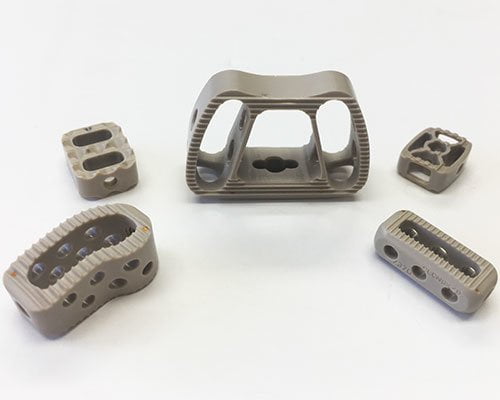 A modulus similar to bone – Ideally, a cervical implant or spacer would behave like cortical bone once placed, as this ensures minimal likelihood of developing complications. PEEK cervical implants provide this, with a degree of stiffness that is nearly identical to bone. In fact, PEEK’s modulus can be altered to fit the procedure, as it is significantly more flexible than bone when left unfilled. When filled with Carbon Fiber, though, PEEK cervical implants are practically identical to cortical bone in terms of flexibility and weight bearing ability. Metals like titanium and stainless steel are extremely stiff and can bear more weight than they should, but PEEK bears weight like bone does. The major ramification of excessive weight bearing is subsidence. Titanium implants reduce the amount of weight that neighboring bone is put under. That sounds like a positive, but it trains the body to rely on the implant instead of its own native bone, causing that bone to lose mineral density and strength to an extent. This is subsidence, and the rates of subsidence when utilizing a titanium implant can be greater than 20 percent. This research has been confirmed by reputable medical journals, including the European Spine Journal and BMC Musculoskeletal Disorders. Cervical implants and spacers are intended for permanent placement. Ideally, then, the material the implant is made from would act like a part of the body. PEEK provides this to a degree that titanium and other biomaterials can’t match.
A modulus similar to bone – Ideally, a cervical implant or spacer would behave like cortical bone once placed, as this ensures minimal likelihood of developing complications. PEEK cervical implants provide this, with a degree of stiffness that is nearly identical to bone. In fact, PEEK’s modulus can be altered to fit the procedure, as it is significantly more flexible than bone when left unfilled. When filled with Carbon Fiber, though, PEEK cervical implants are practically identical to cortical bone in terms of flexibility and weight bearing ability. Metals like titanium and stainless steel are extremely stiff and can bear more weight than they should, but PEEK bears weight like bone does. The major ramification of excessive weight bearing is subsidence. Titanium implants reduce the amount of weight that neighboring bone is put under. That sounds like a positive, but it trains the body to rely on the implant instead of its own native bone, causing that bone to lose mineral density and strength to an extent. This is subsidence, and the rates of subsidence when utilizing a titanium implant can be greater than 20 percent. This research has been confirmed by reputable medical journals, including the European Spine Journal and BMC Musculoskeletal Disorders. Cervical implants and spacers are intended for permanent placement. Ideally, then, the material the implant is made from would act like a part of the body. PEEK provides this to a degree that titanium and other biomaterials can’t match.- Excellent radiolucency – PEEK’s modulus is a critical trait, but radiolucency is considered just as important among most medical professionals. With superior radiolucency, PEEK implants and spacers offer complete visibility with most forms of medical imaging, including X-rays, CT and MRI scans. With PEEK’s superior radiolucency, surgeons can precisely monitor a patient following surgery. The surgical team can get a complete picture without a metal implant clouding up the images with scatter. Of course, radiolucency is not always preferred. If the implant is totally transparent, it may be difficult to locate. Fortunately, PEEK is also flexible in this regard, as it can be augmented with small metallic markers for better visibility. Alternatively, Barium Sulfate can be added to the PEEK polymer to make it more visible with imaging. Image contrast ratios vary between 7 and 15 percent of added Barium Sulfate, depending on how much contrast is desired.
- Flexibility – PEEK can be modified to suit a range of procedures and patients. This largely concerns the PEEK’s modulus and radiolucency, both of which have an outsized impact on how the implant behaves and how surgical teams will handle their patient following surgery.
- Precise tolerances – A concern among medical facilities is that they may receive components that behave inconsistently from one to the next. Tight engineering tolerances are a must-have in an implant. The common belief is that polymers lag behind metals in this area, and while metal has historically held a sizeable advantage, that’s no longer the case with PEEK.
- Cost effectiveness – Cost may not be the central concern for some medical facilities, but it is a factor and must be considered. This is another area where PEEK shines bright. PEEK components, again, can be made using machining and injection molding methods. At lower component volumes, machining is the cost-effective choice, while injection molding makes sense for larger production campaigns. Part of cost effectiveness is lead times, and PEEK’s adaptability during processing and fabrication ensures that lead times are kept to a minimum.
- Design control – PEEK processing methods are adaptable enough that even if changes need to be made to the design after production has started, it can be done. This is true no matter what processing method a client opts for, with machining of components being more easily modified than injection molded components since a new or modified mold doesn’t need to be fabricated. If new capabilities or improved capabilities need to be added to the design, it’s an option on the table.
There are more advantages to PEEK, but the message is clear: PEEK cervical implants and spacers are ideal for many patients.
A look into the future of PEEK
What does that future really look like for PEEK cervical implants and spacers? Osseointegration has been challenging as even after processing or machining, PEEK tends to be bio-inert and the surfaces are notably smooth, which can make it difficult for native bone to bond to the implant. However, there are already several solutions available to prevent this issue.The newest generation of PEEK cervical implants and spacers tackles this problem head on. Here are some of the most promising solutions being offered:
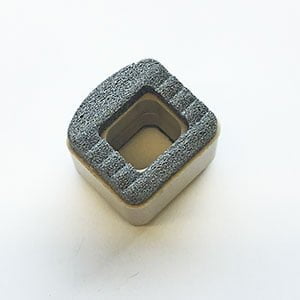 Hydroxyapatite and micropores – Many medical device manufacturers have introduced hydroxyapatite and structural augmentations to PEEK to create a better environment for osseointegration. Hydroxyapatite is a form of calcium that occurs naturally but is relatively rare. In the body, though, it is extremely common, as up to 50 percent of bone volume is modified hydroxyapatite. This modified form of hydroxyapatite is called bone mineral, which should indicate how important it is to proper bone function. Native bone possesses an affinity for hydroxyapatite and will bond to it if given a chance. Implants and spacers engineered with micropores enhance this technique, as the bone can grow into the pores and effectively lock into place. An obvious benefit to relying on hydroxyapatite is that it behaves like bone because it is the foundation of bone tissue. Most new PEEK cervical implants and spacers adopt this approach, but engineering firms are each coming up with their own way to use it properly.
Hydroxyapatite and micropores – Many medical device manufacturers have introduced hydroxyapatite and structural augmentations to PEEK to create a better environment for osseointegration. Hydroxyapatite is a form of calcium that occurs naturally but is relatively rare. In the body, though, it is extremely common, as up to 50 percent of bone volume is modified hydroxyapatite. This modified form of hydroxyapatite is called bone mineral, which should indicate how important it is to proper bone function. Native bone possesses an affinity for hydroxyapatite and will bond to it if given a chance. Implants and spacers engineered with micropores enhance this technique, as the bone can grow into the pores and effectively lock into place. An obvious benefit to relying on hydroxyapatite is that it behaves like bone because it is the foundation of bone tissue. Most new PEEK cervical implants and spacers adopt this approach, but engineering firms are each coming up with their own way to use it properly.- PEEK-Zeolite composites – Introduced by DiFusion Technologies, PEEK-Zeolite composite implants opt for ionic attraction over hydroxyapatite. The main player here is the zeolite, which is fully integrated into the PEEK. Some implants containing hydroxyapatite only feature the mineral on the implant’s surface, which can be plenty effective. DiFusion, however, believes that totally integrating the active material will result in greater efficacy. Zeolite is another naturally occurring mineral, this one of the aluminosilicate variety. When embedded in the implant, it produces a negatively charged surface that the body’s osteoblasts are naturally attracted to. Osteoblasts, of course, being responsible for the creation and depositing of new bone tissue. The zeolite promotes osteoblast activity at the implant site, encouraging greater rates of bone tissue production and osseointegration. PEEK-Zeolite composite implants and spacers have already been the subject of favorable research. The primary study backing PEEK-Zeolite involved six rabbits, each given a pair of dumbbell implants. One implant contained only PEEK, while the other consisted of PEEK-Zeolite. The results were significant in PEEK-Zeolite’s favor. After 12 weeks in the body, the implants were evaluated and scored in several areas, including the potential fibrosis, bone resorption and the rate of bone in-growth. PEEK-Zeolite was superior in bone in-growth (PEEK-Zeolite encouraged much higher rates of bone growth), bone resorption (it was nearly nonexistent with PEEK-Zeolite) and the likelihood of fibrosis (PEEK-Zeolite was much less likely to produce significant fibrosis). PEEK-Zeolite was also superior to PEEK in its ability to handle compressive load. In all, the early showing on PEEK-Zeolite is an impressive one.
- Cohere implants – Vertera (acquired by NuVasive in 2017) created a version of an enhanced cervical implant called the Cohere. The Cohere doesn’t deviate too far from the hydroxyapatite and micropore formula, but it does reach that objective using different materials. It also comes with a couple engineering features that improve performance further. The Cohere is made mostly from PEEK, but on the superior and inferior surfaces, the Cohere is augmented with scoria. Scoria is an igneous rock that is naturally riddled with microscopic pores, so it makes for a natural fit with modern PEEK implants. According to Vertera, Cohere implants offer much greater expulsion resistance. Also, the Cohere is fabricated without ridges, which helps prevent subsidence, and with a porous architecture that imparts additional resistance to extreme impaction forces. The scoria naturally possesses excellent shear strength and micropores that offer greater than 99 percent interconnectivity. In short, this is the hydroxyapatite and micropore combo kicked up to another level.
There are many more examples of cervical implant designs focused on better osseointegration. This is a competitive field, with engineering firms working hard to create an implant that encourages better bone in-growth. That’s good news for patients in need of a PEEK cervical implant or spacer, as the newest generation promises a level of performance not seen in prior implant offerings.



